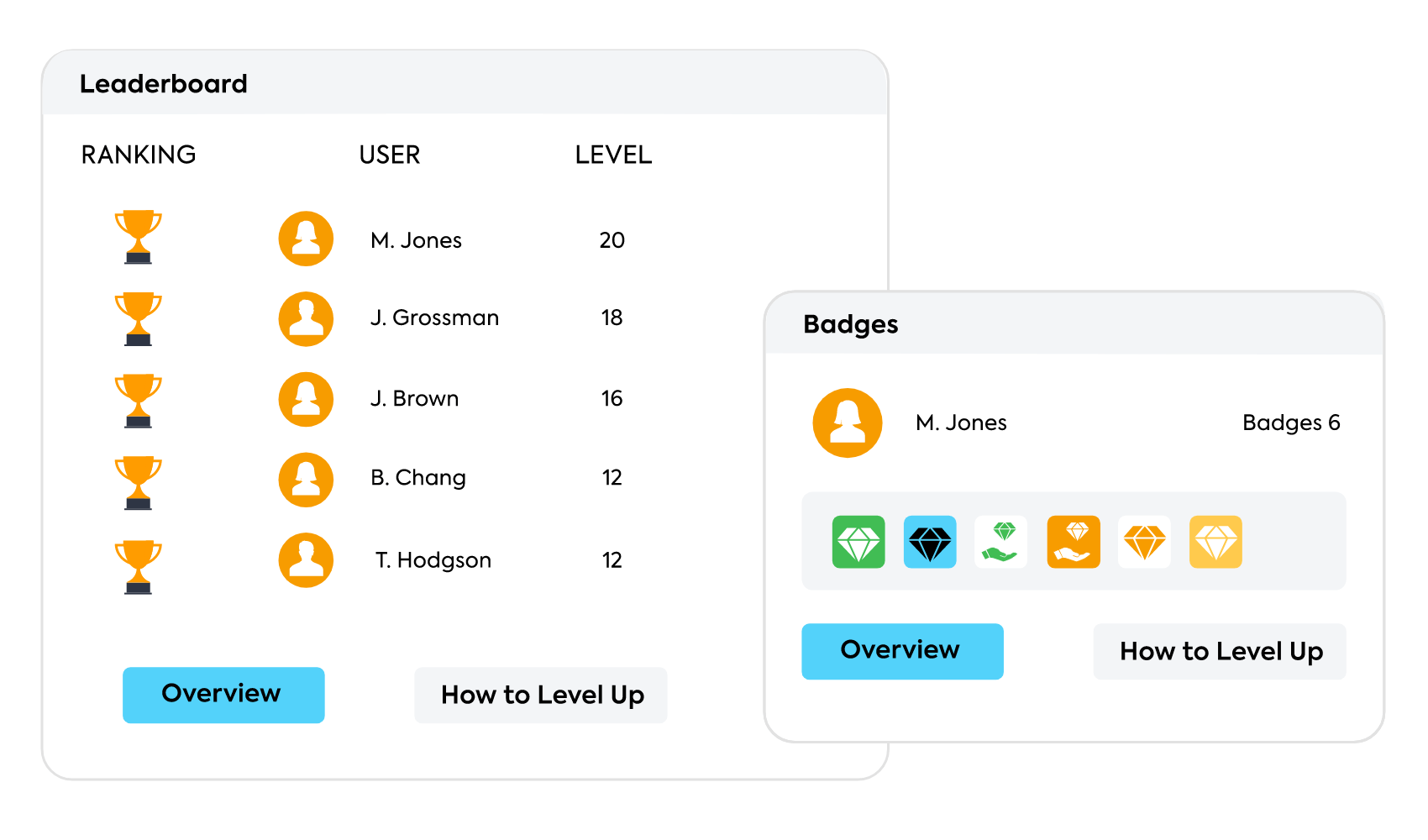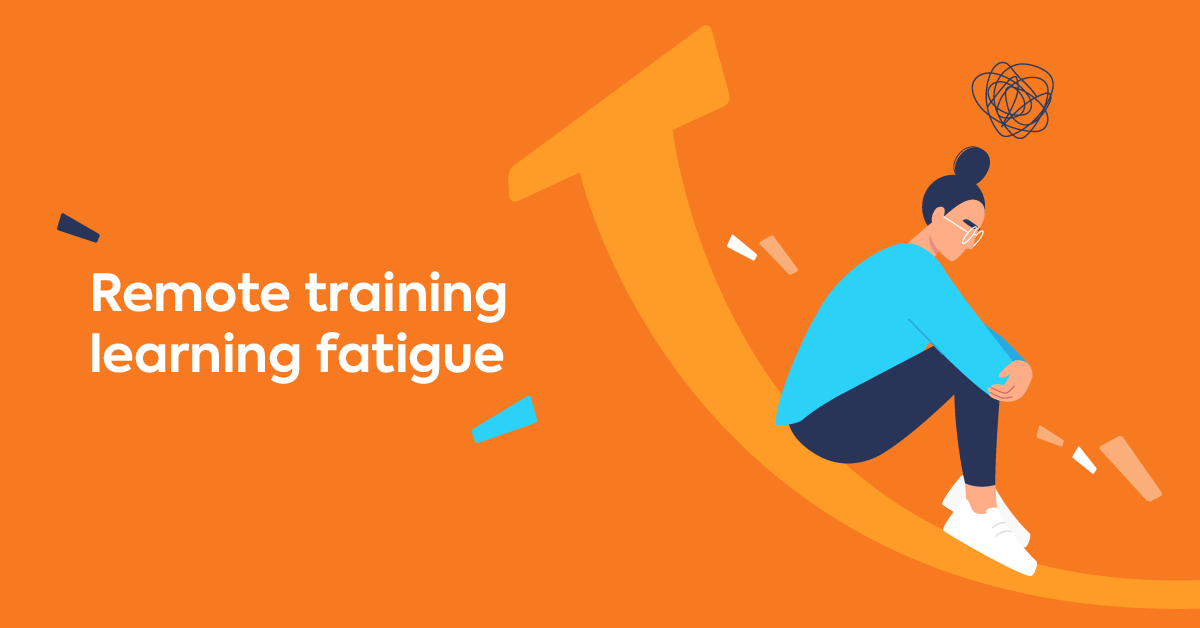Remote training has become an invaluable tool for continuing employee development. Since the onset of the global pandemic, virtual communication technology has helped business, and training strategies, continue more or less as usual. But with a nearly complete shift to online learning comes a potential drawback: online learning fatigue.
Consider this scenario: It’s the end of a long workday for Maria. She’s been in video conference meetings and conducting business online for hours. Suddenly, a reminder pops up on her screen: a one-hour training session starts in five minutes. Maria is far from excited. Her eyes glaze over and she tries to muster the energy to engage. But, instead, she just feels total exhaustion.
Maria’s not alone in what she’s feeling. Many employees are experiencing burnout or anxiety around added screen time when it comes to remote training. Fortunately, you can do something about it. But first, let’s have a closer look at what virtual learning fatigue is and why it happens.
What is online learning fatigue?
Online learning fatigue is the overwhelming sense of exhaustion, anxiety, stress, or burnout employees feel due to constant online calls and meetings. Quite similar to “Zoom fatigue,” this state of weariness can pose a challenge to employee learning and development.
Why is virtual communication so taxing?
Employees who’ve transitioned to working from home, report they now spend 50% more time on video calls than they did pre-pandemic. All this extra screen time leaves people burned out for a few reasons.
- They feel a greater need to be “on” in live online workshops and meetings. A lot of effort goes into looking professional and engaged so others can tell they’re present.
- They’re more tempted to multitask when they’re already online. It’s easy to get pulled into responding to emails, chatting with others, or surfing through open tabs while they’re in online training or meetings.
- The fact that many people are sharing their at-home workspaces with partners, children, or pets can put a further strain on their ability to concentrate.
How does learning fatigue affect your employees?
So what does this mean for your online training? According to a recent survey, 69% of employees working from home are experiencing burnout. Even for the most motivated employees, one more online learning session might feel like too much.
When employees are feeling Zoom fatigue in training, they’re more likely counting down the minutes until they can shut their screen off than absorbing your training content.
The good news is that you can prevent this kind of exhaustion and ease learners’ burden.
8 ways to overcome online learning fatigue
So how do you fight Zoom fatigue? There are a number of steps you can take. Try these eight tips for combating virtual learning fatigue and boosting learner engagement.
1. Be concise
Lean toward providing short courses or making microlearning the center of your training strategy. Brief, focused lessons that can be completed in minutes help employees concentrate better.
Shorter times between stopping places also mean learners can take breaks when needed. They’ll be able to recharge without disrupting their learning. For example, if you’re using eLearning videos in your training courses, make sure they’re no longer than 3-4 minutes.
Meet TalentLibrary™
A growing collection of ready-made courses that cover the soft skills
your teams need for success at work![]()

2. Keep it flexible
Another thing that makes eLearning so appealing is the option for self-pacing. Remote training software gives employees the flexibility to log in and complete training on their own schedules. That kind of freedom can alleviate a lot of stress for remote learners.
When employees have a choice in how and when to complete their training, it’s not a burden on their already busy schedules. They can plan it for downtime during their day—or even for convenient times outside of working hours.
3. Build a sense of community
Often, remote employees start to feel drained because they’re being isolated. People get energy from being around other people. You can help by adding opportunities for connection to your training.
Consider building some real-time training sessions into your strategy. Interacting with a trainer and learning alongside their peers—even through a screen—can help employees feel less alone. Breaking up self-paced training with a live session here and there gives employees a good touchpoint for seeing that they’re not on their own.
4. Add some elements of play
Sometimes a bit of healthy competition can re-energize employees in their learning. Use available LMS features to add components of gamification to your training.
Things like leaderboards to compare progress with colleagues can keep learners coming back and boost energy. Also, think about adding opportunities to earn badges for completing challenges or more points for finishing quizzes to engage them in the learning process.

Add a playful touch to your training with TalentLMS
The training platform that users consistently rank #1.
Easy to set up, easy to use, easy to customize.
5. Make it social
Another way to re-energize learning and move away from static screen time is to make each course a social experience. Getting employees to work together adds a level of interaction that fights feelings of isolation.
More hands-on experience with the content also makes it more meaningful and memorable. Try building in collaborative learning activities or group projects that get people talking. As learners think more deeply about the practical application with their colleagues, they’ll understand and retain more.
6. Build more engaging content
One of the best things you can do to keep learners from zoning out during your training is to make sure it grabs and holds their attention. Take a look at your content and see how you can make it more engaging.
Take into account things like learning mediums. Is your training mostly full of text-heavy slides? Add some videos or dynamic graphics to stimulate different kinds of learners.
Or, drop in interactive elements like quizzes and practice and branching scenarios. Requiring learners to do something—to answer questions, click on the screen, or work through skill application—focuses their energy. Interacting with the content strengthens their interest and keeps training from feeling like a chore.
Looking for more inspiration? Here are 5 ideas on how to build remote training courses that boost engagement.
7. Update your user interface
Content isn’t the only part of your training to think about when optimizing the user experience. Consider the design of your courses as well, and tailor them for screen-weary learners.
For example, use minimalistic fonts to reduce eye strain. Try replacing presentations or manuals with helpful infographics so learners can grasp the same piece of information in less time. And be sure your LMS is easy to log into and navigate so employees don’t spend extra time or get frustrated trying to get through their training.
8. Build training into the work schedule
Finally, help your employees have a better experience by incorporating education into their workday. Asking people to go through training can feel like you’re adding tasks to their to-do lists. Let them know you value their time and are willing to invest in their development by building learning time into their schedules.
Clear out space so people can find the downtime to log in. When you show learners training is part of the employee experience, you take away the stress. Instead of worrying about how to fit one more thing into their schedules, they’ll be able to focus and learn.

Reduce learning fatigue by supporting your employees
Employees need encouragement and understanding when it comes to remote work and learning challenges. If they feel that training is just another box to check, that they just need to get it over with, it won’t be effective.
Even if a course is mandatory, you can help employees be more engaged and attentive when you listen to their concerns. Adjust the training to fit their schedules. Build it into their work schedules to show that their time is important.
And make it a point of connection for them—with their colleagues as well as with your company and its values. When you do, you’ll boost learner engagement and eliminate learning fatigue for good.
